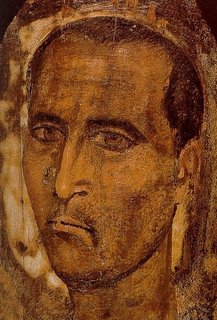L'Eclisse
Like L'Aventurra and La Notte before it, L'Eclisse is at times difficult to get a fix on. What exactly does it mean when Vittoria (Monica Vitti) is shown staring up at the metal poles of an unfinished fence, swaying in the wind? Does it mean that she herself feels unfinished, or is somehow swaying in the wind? Sure, it's meant to be mysterious, but what does it mean to be drawn into a mystery like this? Is she happy, or sad? Or is it ultimately just a meaningless image, or event? If that's true, is Vittoria thinking about meaninglessness? It's very hard to say, but one thing definitely stands out: Monica Vitti is beautiful, and especially when she's shown shifting her weight from side to side, and never more so than when she is filmed in front of a night-time sky or in a black dress.
This might seem to be a aimplistic way of looking at the movie, but there are aspects of Antonioni's movies that really aren't all that complicated. It's pretty clear that Antonioni enjoyed filming Vitti as much as we enjoy watching her, and I think it's fair to say that it was she who inspired L'Aventurra and perhaps even La Notte, even though she plays a secondary character in the latter. So if it's love that inspired these movies, why is it that sequence after sequence seems so meaningless or sad? So it's 'erotic longing' that inspires, or rather doesn't, and the result is a few fleeting moments of happiness and periods of ennui that aren't so fleeting. Even the happier exhanges between the lovers are undercut by the memory of an earlier relationship that ended without explanation. Happiness is a confusion of limbs and bodies, perhaps identities themselves, and is fated for extinction. Just like everything else. This is one way of making sense of the extraordinary ending of L'Eclisse, in a sequence of images (not actually a sequence at all) which reveals "life" and maybe something beyond life, and then a bright light, and then nothing at all.
This might seem to be a aimplistic way of looking at the movie, but there are aspects of Antonioni's movies that really aren't all that complicated. It's pretty clear that Antonioni enjoyed filming Vitti as much as we enjoy watching her, and I think it's fair to say that it was she who inspired L'Aventurra and perhaps even La Notte, even though she plays a secondary character in the latter. So if it's love that inspired these movies, why is it that sequence after sequence seems so meaningless or sad? So it's 'erotic longing' that inspires, or rather doesn't, and the result is a few fleeting moments of happiness and periods of ennui that aren't so fleeting. Even the happier exhanges between the lovers are undercut by the memory of an earlier relationship that ended without explanation. Happiness is a confusion of limbs and bodies, perhaps identities themselves, and is fated for extinction. Just like everything else. This is one way of making sense of the extraordinary ending of L'Eclisse, in a sequence of images (not actually a sequence at all) which reveals "life" and maybe something beyond life, and then a bright light, and then nothing at all.


0 Comments:
Post a Comment
<< Home